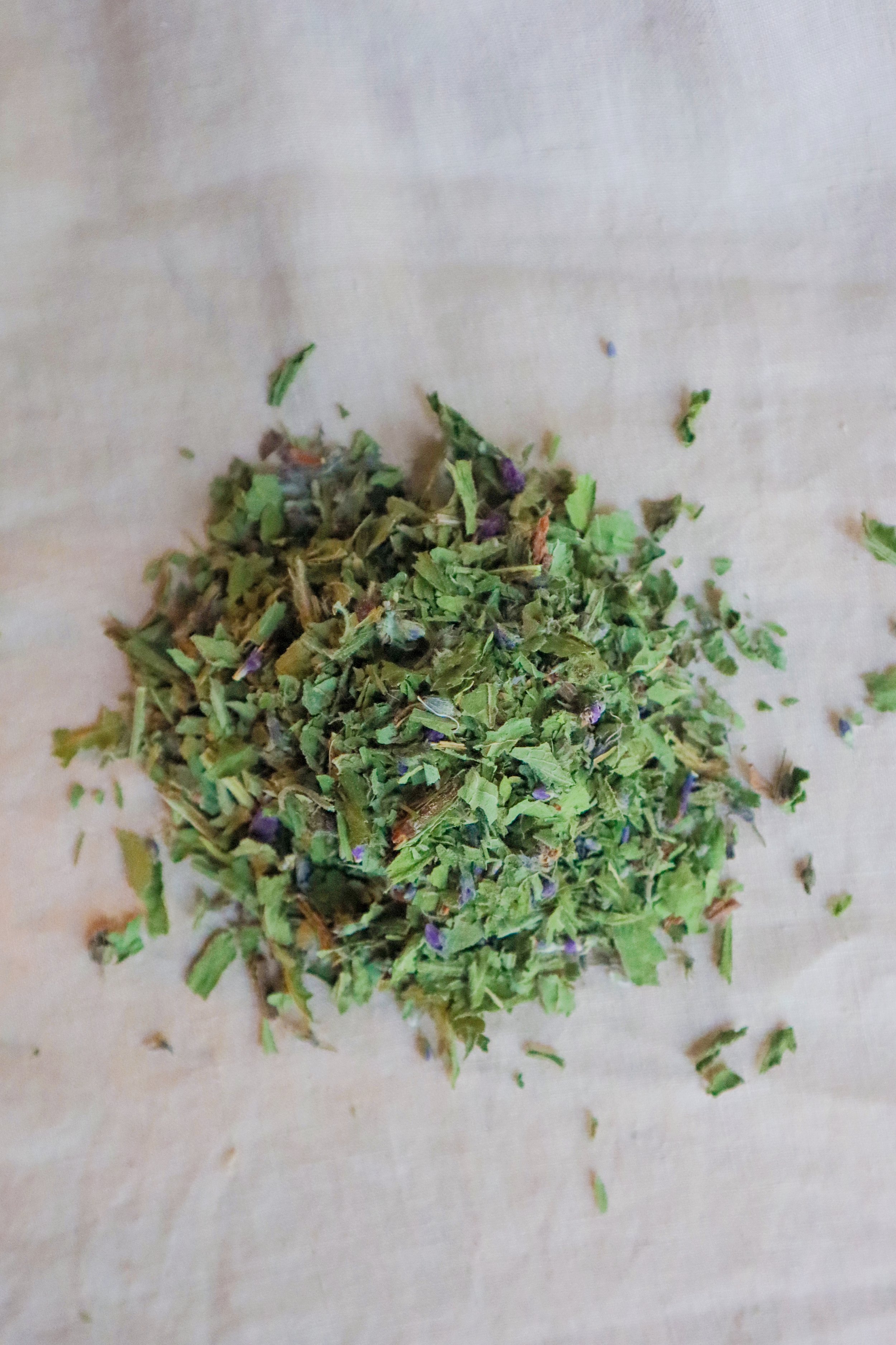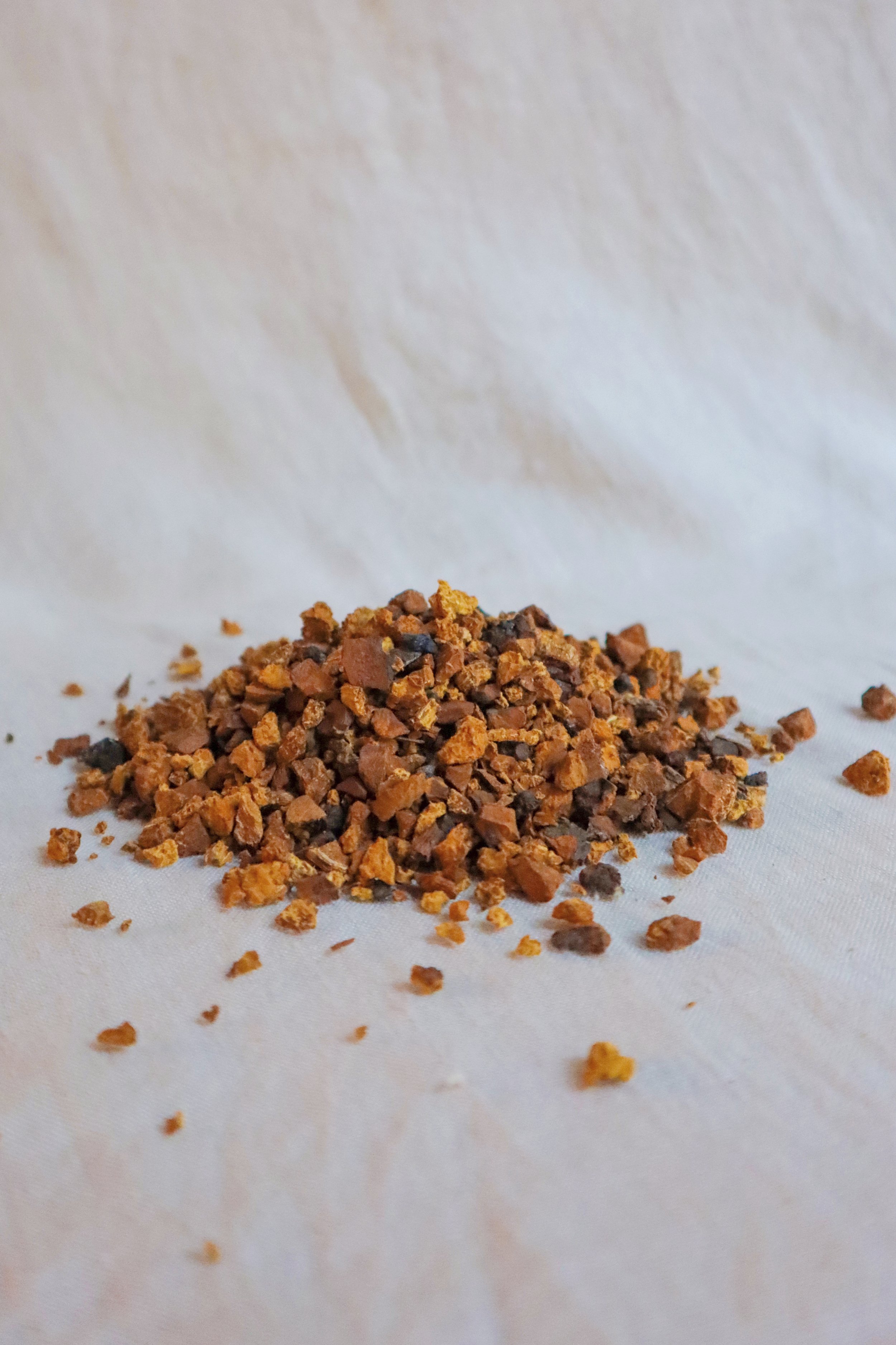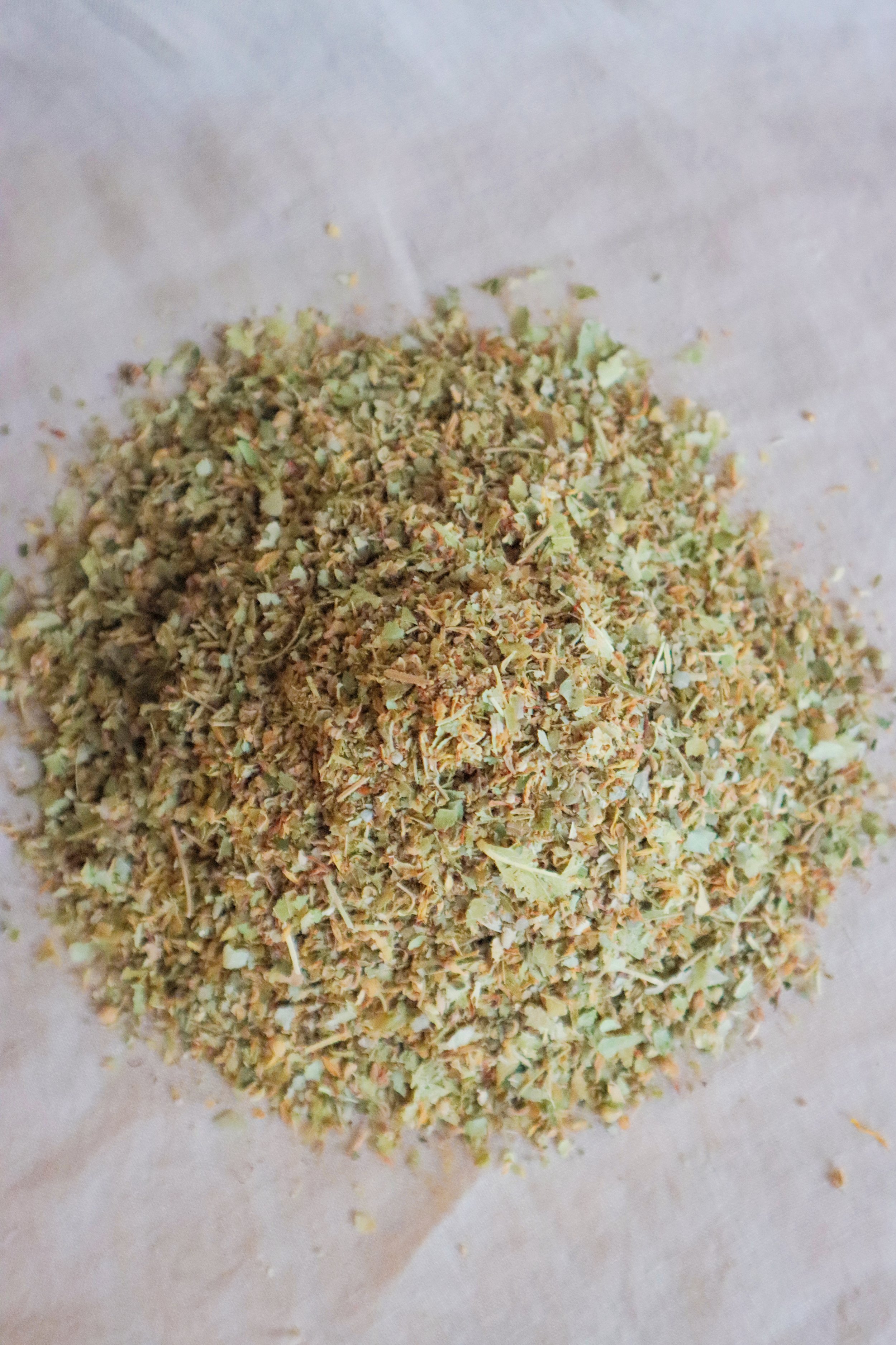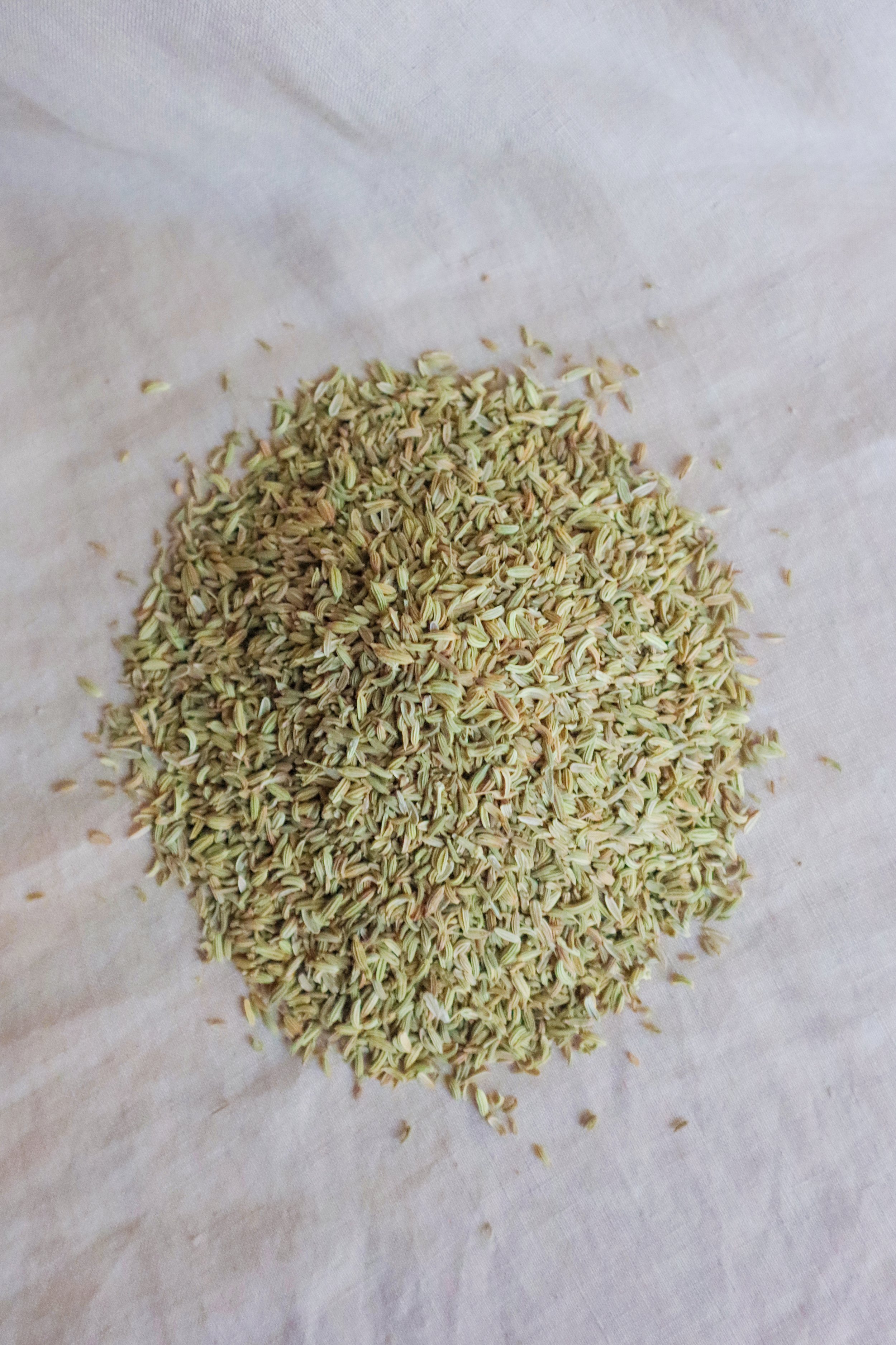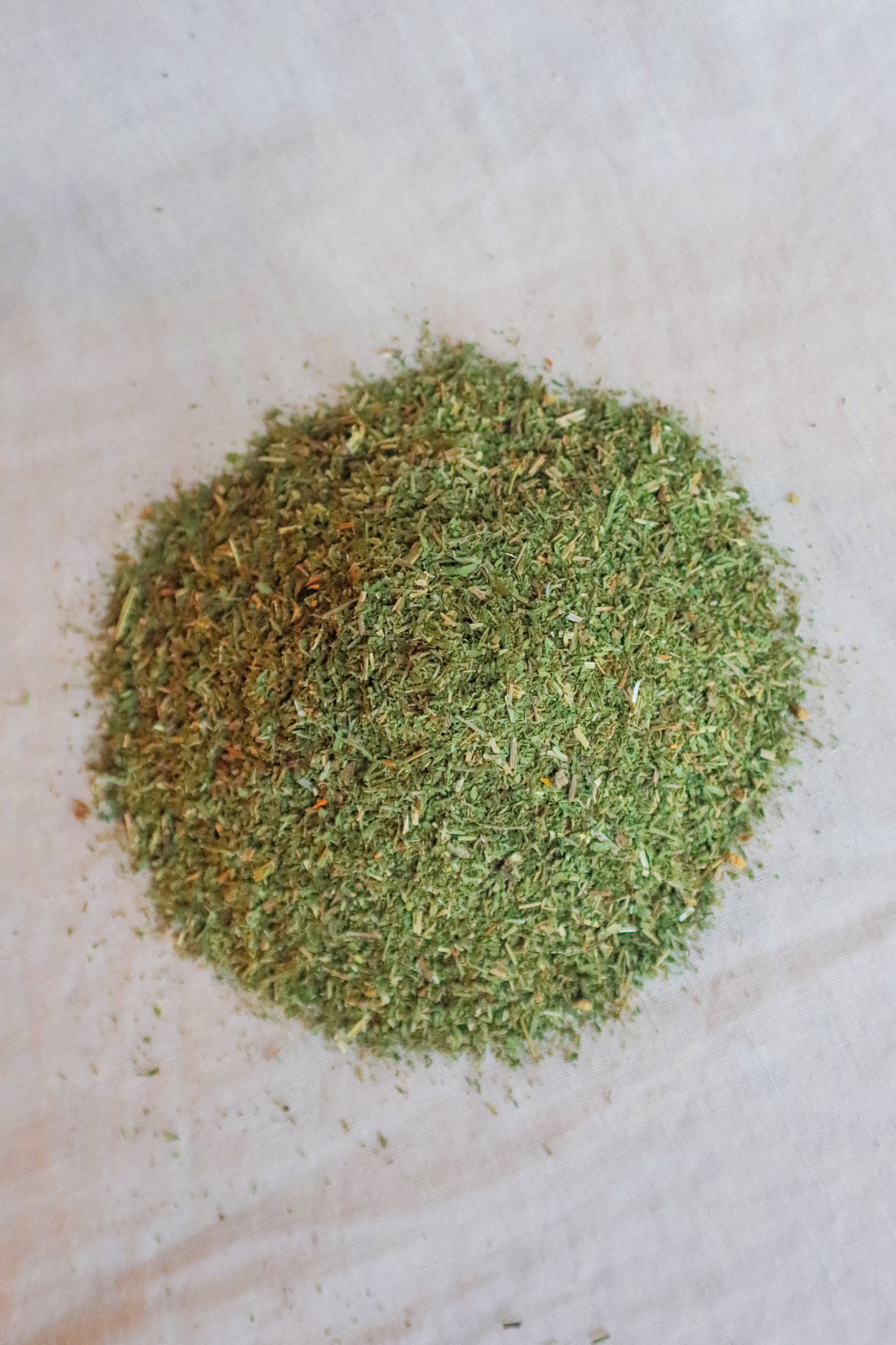COMFREY | Symphytum officional
While this plant may be loathed by some for how prolific it can be, it has been loved by herbalists for the way it brings tissues together. Comfrey has also been called knitbone and bruisewort, indicating some of its many uses. Comfrey leaf shines in its topical uses for first aid purposes. Used as a poultice or infused oil/salve, comfrey supports the body in rebuilding tissue, making it a wonderful plant to have on hand for broken bones, sprains, and wounds. As a tea, the leaves can support healing the gut lining, having a simmilar knitting action inside the body as well. It is rich in minerals and beloved by bees in the summer months.
Part: Leaf & flower
Sold by the ounce
While this plant may be loathed by some for how prolific it can be, it has been loved by herbalists for the way it brings tissues together. Comfrey has also been called knitbone and bruisewort, indicating some of its many uses. Comfrey leaf shines in its topical uses for first aid purposes. Used as a poultice or infused oil/salve, comfrey supports the body in rebuilding tissue, making it a wonderful plant to have on hand for broken bones, sprains, and wounds. As a tea, the leaves can support healing the gut lining, having a simmilar knitting action inside the body as well. It is rich in minerals and beloved by bees in the summer months.
Part: Leaf & flower
Sold by the ounce
While this plant may be loathed by some for how prolific it can be, it has been loved by herbalists for the way it brings tissues together. Comfrey has also been called knitbone and bruisewort, indicating some of its many uses. Comfrey leaf shines in its topical uses for first aid purposes. Used as a poultice or infused oil/salve, comfrey supports the body in rebuilding tissue, making it a wonderful plant to have on hand for broken bones, sprains, and wounds. As a tea, the leaves can support healing the gut lining, having a simmilar knitting action inside the body as well. It is rich in minerals and beloved by bees in the summer months.
Part: Leaf & flower
Sold by the ounce
-
Having dried comfrey on hand for poulticing is never a bad idea. Mixing it with just enough water to make a paste and applying this paste to a bruise, broken bone, or sprain for 20 minuets 2-3 x/day will speed up the healing process no doubt. The messiness and inconvenience of this method deters some, so an infused oil or salve is another wonderful option!
-
Vulnerary, demulcent, astringent, mucilaginous
-
Because of the rapid pace at which comfrey heals the tissue, it is not advised to apply it to puncture wounds. Comfrey heals tissue from the top down and puncture wounds must heal from the bottom up to avoid infection.
Additionally, comfrey has had some controversy surrounding it due to compounds called pyrrolizidine alkaloids, which are alkaloids that irritate the liver. These are found in higher numbers in the root than the leaf. Use with caution if you have known liver disease.
Interestingly enough, 12th century abess, herbalist, and mystic Hildegard von Bingen wrote on comfrey “If a person eats it for no reason, it destroys all of the humors that had been correctly established in him. But if some part of a person is deficient, ulcerated, or wounded and he eats comfrey, it quickly purusues the mucus which is coming out there, healing it as well as the ulcurs on the skin.” (Physica pg. 73) Essentially, use when needed as it is a rapid healer indeed!
-
Organically farmed in Oregon.
-
These statements have not been evaluated by the FDA. This product is not intended to diagnose, treat, cure, or prevent any disease.
